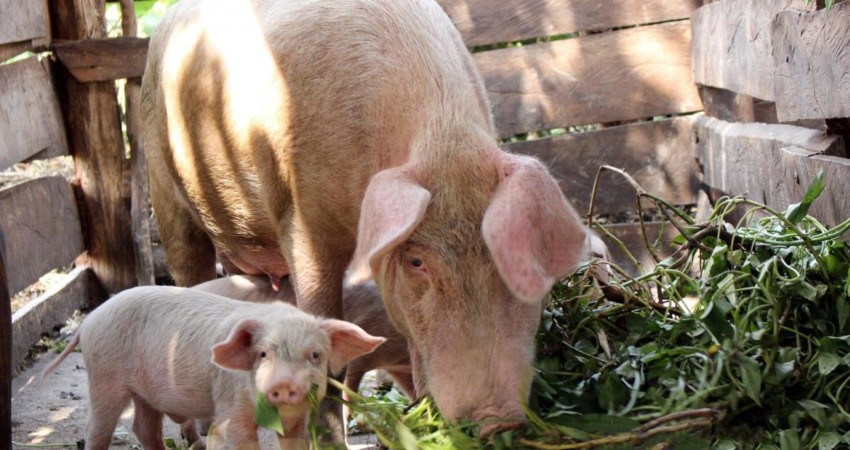

Do seasonal changes play a role in the health status of pigs? Yes they do affect the health of your pigs.
The weather and the changing seasons can play an important role in the health status of pigs. They’re more sensitive to temperature than most kinds of livestock.
Baby piglets – especially the modern white breeds that have very little hair when they are born – cannot control their body temperature by shivering, so they need help to keep warm.Cold piglets won’t feed, become weak and are prone to infection.
Older pigs, on the other hand, are very sensitive to heat and cannot lose heat by sweating. Panting is often not enough to cool them down.
Sows that are too hot may not provide enough milk to their piglets and may not come back on heat after the piglets have been weaned, or return to service because they have aborted the foetuses. This is called summer infertility. It’s important, therefore, to keep piglets warm in the farrowing area without over-heating the sow.
This is managed by constructing a creep area (an upside-down box, for example, as long as it’s firmly fixed to the side of the pen) in which the piglets can go to sleep. It should contain lots of deep bedding – straw or wood shavings – and, if you’re in an area that gets very cold in winter and you have a reliable electricity supply, it can be heated with an infra-red lamp suspended where neither sow nor piglets can get burnt.
If the pigs are exposed to droughts in winter, they could get pneumonia. This happens particularly in grower pens, which are often open to the elements. In any kind of barn where pigs are kept the temperature can be regulated in winter and summer by using sacking or plastic curtains that are rolled up when it’s hot, and dropped to keep out the cold.
Even in simple pens there should be a covered and protected area where the pigs can shelter in bad weather. Providing shade for pigs in summer is important to prevent sunburn, heat stroke and abortions.
 Contact Jaguza Support
Contact Jaguza Support